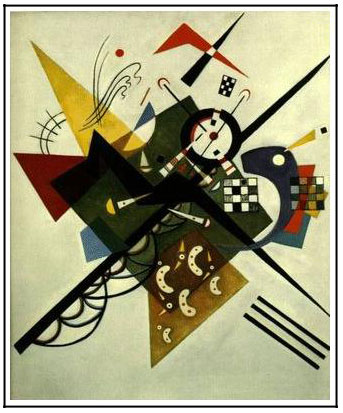Structuralism in Art In the early part of the 20th-century European structuralists argued that 'real' art was expressive only of a thing's ontological, metaphysical or essential nature. By the 1930s and 1940s structuralists reasoned that the mental processes and social preconceptions the artist brought to the art are more important than the essential, or ‘ideal’, nature of the thing. Soon, the word 'form' was used interchangeably with the word 'structure'. In 1940, the American art critic Clement Greenberg, in an influential piece in Partisan Review, argued that the value of art was located in its form, which is inseparable from its content. In a talk given by Clement Greenberg at Western Michigan University, January 18, 1983, he addressed the topic of 'formalism' directly. “Formalism was originally the name of a Russian art and literary movement before the First World War. And then it became used by the Bolsheviks (Soviets) for any kind of art that was for its own sake. It became a dirty word like "art for art's sake," which is a valid notion. Sometime in the '50's the word formalism came up again in the mouths and at the pens of people I dare to call middlebrow. And then, it's true, I was made responsible for it, though I wasn't the only one, and by one of these easy inferences that plague human thought, it was held that I advocated a certain way of painting." "Now, I haven't written a word in favor of a certain kind of painting that hasn't been made yet. You only write about art that's already been made. My prejudice, as Professor Link says, is towards representational painting, and it's the only kind I can do, but I had to accept the fact that the major painting of our time, and the major sculpture too, after a while, was abstract, because you can't choose what to like and what not to like. I say major because the difference between major and minor is very important. It became very important for this country in the '40s when the Abstract Expressionists finally decided they could compete with the French and stop being in tutelage. But my rhetoric wasn't very careful, otherwise I couldn't have been misunderstood to the extent I have been. I recognize that and I don't put the blame entirely on the people who misunderstood me. Though I still say I haven't written a word that gives you reason to think that I'm for abstract art, as such, as against other kinds of art. I wrote a piece called "Modernist Painting" that got taken as a program when it was only a description, and I was thought to believe in things that I was describing [as a program]. Again, it was the fault of my rhetoric. I was in favor of "pure" art in spite of the fact that I put quotation marks around "pure" or "purity" whenever I used them, because I don't believe there's any such thing as pure art. It was an illusion. It was a necessary illusion, apparently, for modernist artists and it helped produce some great art and some great poetry. A necessary illusion for Mallarmé, say, and for Valery, and maybe even for Ezra Pound. It was a necessary illusion for Picasso and for Cézanne. There is no such thing as pure art, or pure poetry, or pure music. Anyhow I don't believe there is such a thing. But I made the mistake of contenting myself with quotation marks and not saying "look, I don't believe this as a program, I'm simply describing." And so people assumed that was my program. I'd been describing what I thought had happened under modernism, and nothing more and nothing less. It was also inferred that I had said there was some necessity working in this although I said nothing to that effect. But I blame myself. I should have been more careful.” Formalism
today
|
